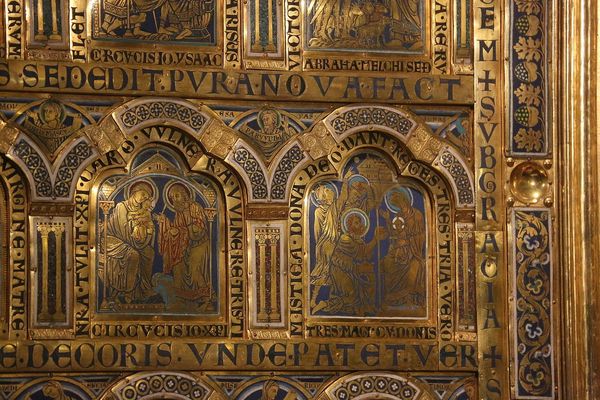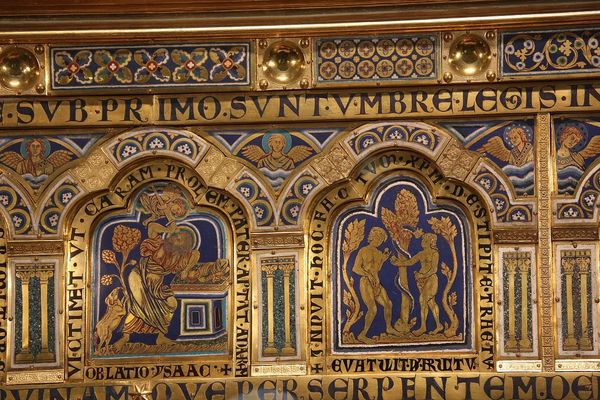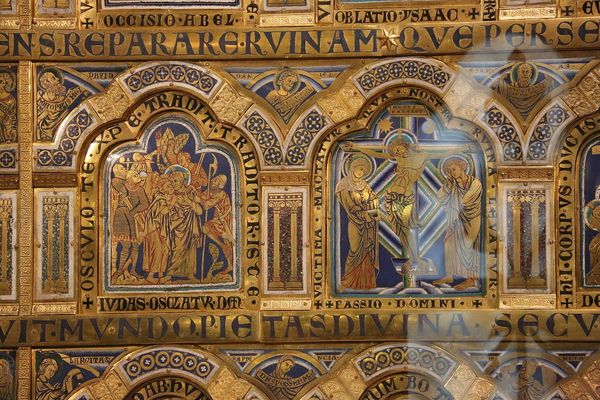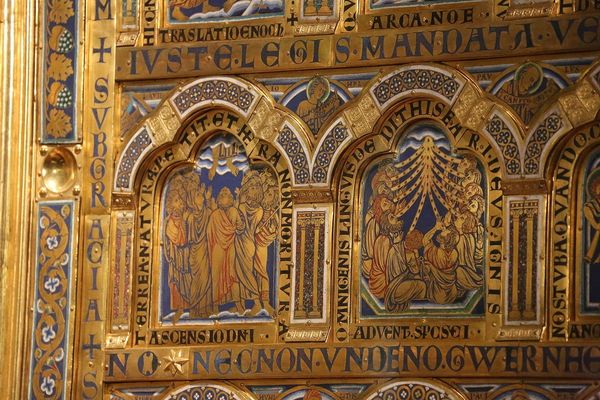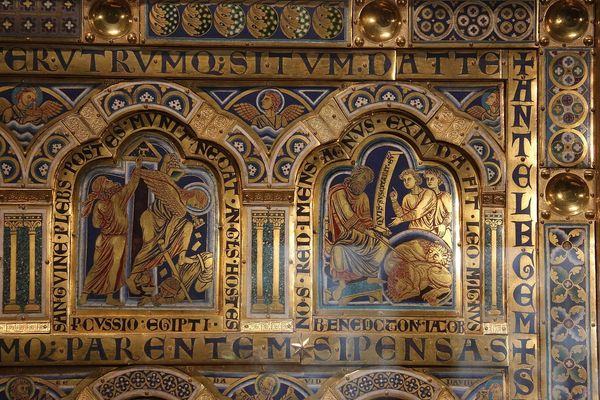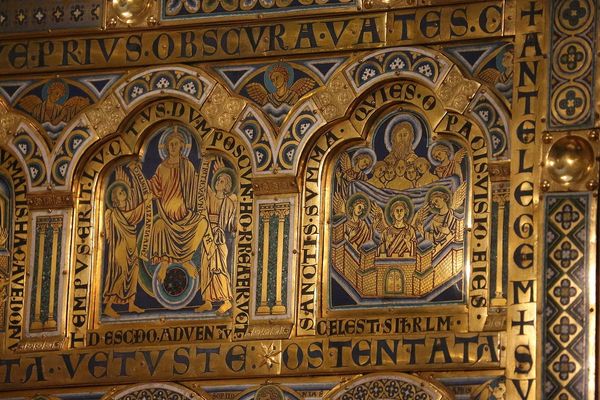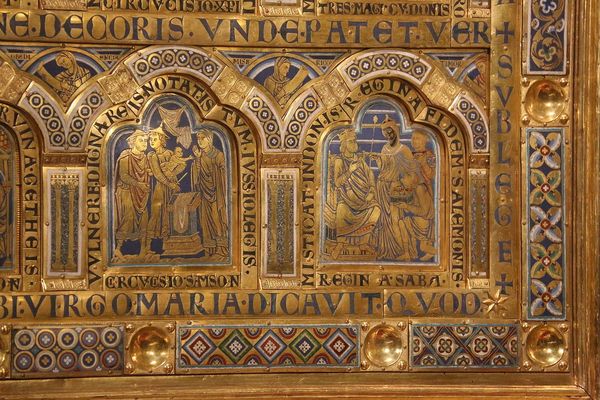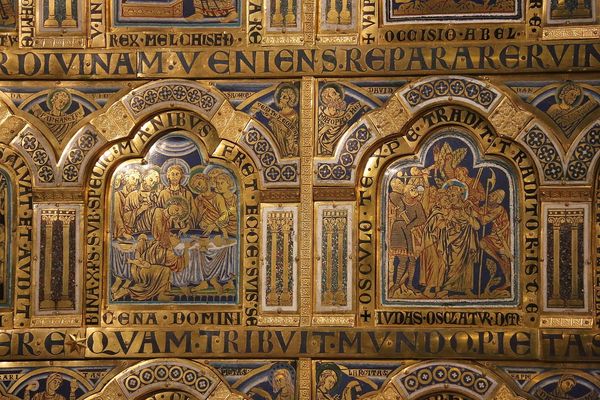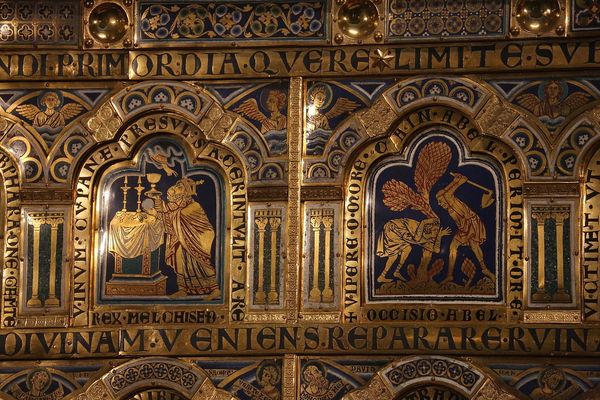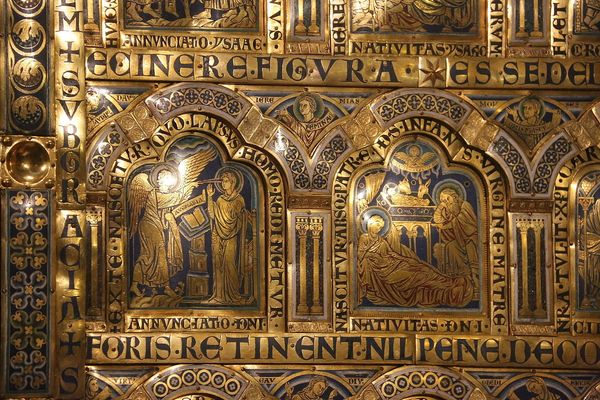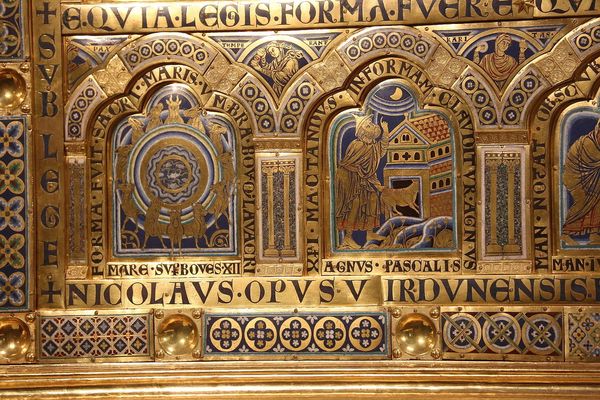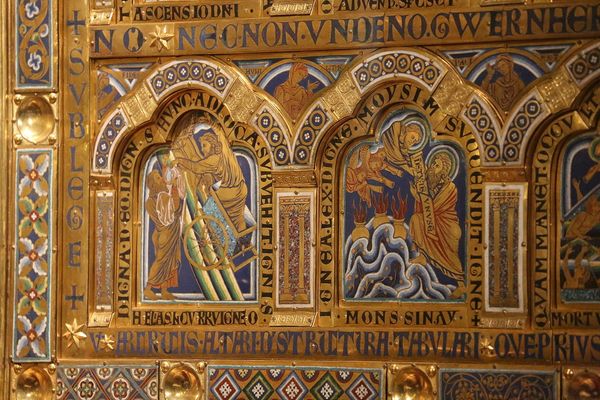
mosaic, carving, tempera, mural, architecture
#
mosaic
#
medieval
#
carving
#
tempera
#
holy-places
#
cultural heritage
#
historic architecture
#
traditional architecture
#
romanesque
#
arch
#
architecture
#
history-painting
#
mural
#
architecture
Copyright: Public domain
Curator: This segment offers us a closer look at the Klosterneuburg Altar, created around 1181 by Nicholas of Verdun. What strikes you first? Editor: Immediately, it's the sheer density. So much intricate detail packed into each panel. There's a feeling of immense history, almost a weightiness conveyed by the composition itself. It makes me consider the audience who viewed this centuries ago – their worldviews, what this imagery evoked in them. Curator: It is indeed dense with meaning. Verdun uses a typological structure, connecting Old Testament scenes with their New Testament counterparts, establishing an ongoing narrative of divine intention. For example, you can see Noah's Ark, representing salvation, just as you also see an image alluding to Enoch's ascendance into Heaven, both symbolic of prefiguring aspects of Christianity. Editor: Right. The ark as prefiguring the Church as a vessel of salvation. But doesn’t the overt connection imposed upon viewers somewhat restrict individual interpretations, forcing them to understand social roles? Especially, considering the power dynamics present at the time this was made, and who this piece sought to serve? Curator: One might argue that it reinforced the established social order; still, it provided a familiar visual language, making theological concepts more accessible. The repetition of certain images allowed for a cumulative understanding, embedding religious dogma. Think of the symbols of kingship that tie back to ancient traditions. Editor: Yes, and it reminds me how intertwined those traditions became with displays of power, influencing gender norms and political strategies during this era and how religion shaped everyday experience, particularly concerning the limited agency granted to different societal demographics during medieval Europe. I wonder about the role visual storytelling plays even now. Curator: Well, there is cultural memory inherent within these images, these connections that remind us where our symbolic structure emanates from, they connect with one another and create continuities, whether imposed upon viewers or otherwise received by them. I wonder how such altarpieces continue to create meaning for people across the world. Editor: This work and our conversation really underscores how historical pieces aren’t relics of the past but active agents in shaping the present—or that they force me to continue my personal exploration. Curator: Absolutely.
Comments
No comments
Be the first to comment and join the conversation on the ultimate creative platform.
